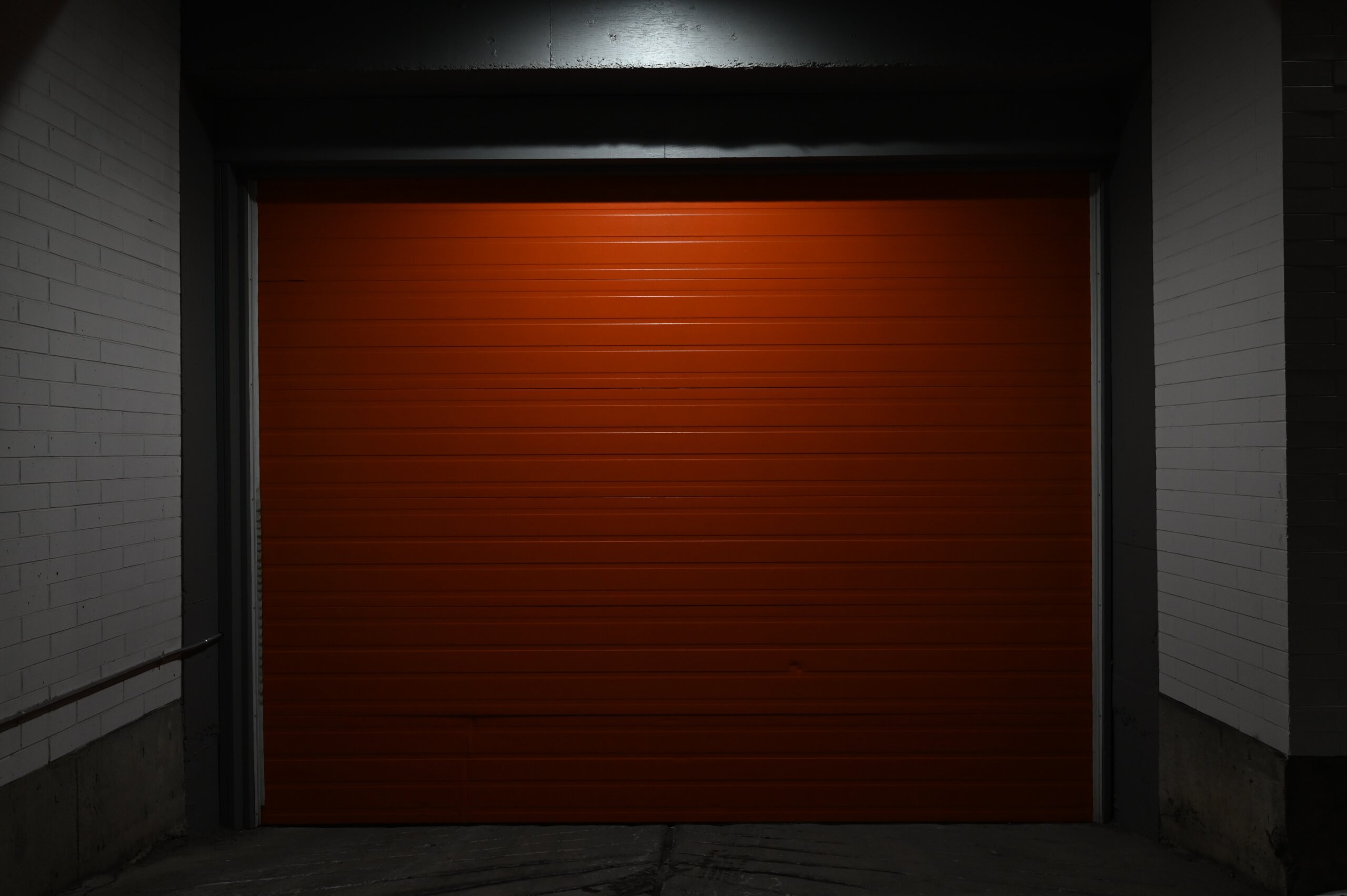
10 Common Garage Door Problems & Tips To Fix Them
The garage door is a symbol of safety, comfort, and functionality. It seamlessly integrates into our daily lives until unexpected problems arise. A noisy creek, a slow movement, or a sudden stop during use are small disturbances. But, these can interrupt our routine and raise questions about the door and its reliability.
Garage doors, with their complex spring systems, rails, openers, and sensors, may sound complex. However, with a deeper understanding of these mechanisms, homeowners can navigate through the potential problems. They can help restore their garage doors to optimal functionality. It is best to have the knowledge and confidence to handle these garage door problems.
Whether you’re an experienced DIY enthusiast or looking for professional help, here are 10 of the most common garage door problems and how to fix them:
1. Noisy Operation
The noise of screeching, rattling, and grinding coming from your garage door can disturb the peace of your home. It can indicate problems with its mechanism. A noisy garage door isn’t just a nuisance. This often serves as a warning sign of wear or lack of maintenance. One of the main culprits behind a noisy garage door is worn rollers. These rollers are responsible for guiding the door along the rails. Also, vibration during door movement can loosen bolts, nuts, or other hardware parts. This can cause clicking or popping noises.
Solution:
Lubricate moving parts regularly with silicone-based lubricant. Apply liberally to rollers, hinges, rollers, and springs to minimize friction and reduce noise during operation. Also check and tighten all bolts, nuts, and screws along rails, hinges, and other hardware components. This is to prevent vibration and resulting noise. If the rollers show signs of wear or damage, replace them immediately. Choose high-quality nylon rollers that produce less noise compared to metal or plastic.
2. Uneven Opening or Closing
Many factors can cause a garage door to open and close unevenly. These include, for example, misaligned stripes. The tracks on which the garage door rollers move can be bent or misaligned, causing the door to open or close unevenly. Uneven sources can also be the cause. The springs on both sides of the garage door balance its weight and ensure smooth operation.
Solution:
If the rollers are bent or misaligned, they may need to be adjusted or replaced. This task should be performed by a qualified garage door technician. The same applies to spring replacement for uneven springs.
Worn or damaged rollers should also be replaced. This ensures smooth operation and prevents further damage to the door. Also check that there are no loose bolts, hinges, or other parts and tighten them properly.
3. Slow Response to Remote or Keypad Commands
Repeated use or aging of the remote control or keyboard batteries can cause signal strength to decrease or fail altogether. This causes delays or unresponsiveness. Damaged or worn wiring, loose connections, or faulty control units in the garage door opener system can cause delayed or inconsistent responses.
Solution:
To ensure smooth operation, replace the remote control or keyboard batteries regularly. Also, identify and eliminate sources of signal interference in the garage. This is, for example, nearby electronic devices or objects blocking the signal and path.
You can also carefully examine the wiring and connections of the garage door opener. Look for signs of damage or loose connections and repair accordingly. It may be wise to seek professional help for a thorough inspection and repair of electrical components.
4. Garage Door Won’t Close Completely
Being faced with a garage door that refuses to close completely can be frustrating and unsettling. This can leave your property open to outside factors and security risks.
Some of its common cause includes:
- Misaligned Safety Sensors – Garage doors are equipped with safety sensors that prevent closing if they detect an obstacle in the door or on the road.
- Obstructions in the Door’s Path – Small or large objects or debris blocking the door and its path can trigger safety sensors and prevent the door from closing completely.
- Limit Settings on the Opener – The garage door opener system includes limits that define the door and the open and closed positions.
- Damaged or Worn-Out Components – Worn rollers, damaged rollers, or faulty hinges can interfere with the door and its smooth movement.
Solution:
Check the security sensors near the bottom of the door. Make sure they are clean, properly aligned, and free of obstructions. Clean any dirt or debris blocking the sensor and field of view and align as needed. You can also refer to the manual for the garage door opener and adjust the limits if necessary.
If solving these problems does not solve the problem or if you are not sure how to adjust the limits or handle the electrical components, it is recommended that you seek professional help. Garage door technicians know to accurately diagnose and safely repair problems with security sensors, limiters, or damaged components.
5. Broken Cables
An alarming sight is the broken cable hanging from the garage door and sides. Broken cables not only endanger the door and smooth operation. It also poses potential security risks if not dealt with quickly.
Constant use, age, and exposure to the elements can weaken cables over time. Friction, tension, and natural degradation can cause cable breakage.
Solution:
When dealing with broken cables, put safety first. If you are unsure or inexperienced, avoid operating the door by hand or attempting to repair it. This can be dangerous.
Look for garage door repair services near you. Contact a qualified garage door technician for help right away. They have the knowledge and tools to deal with broken cables safely and effectively, preventing further damage or accidents.
6. Broken Springs
Broken garage door springs are a critical problem that can cause serious safety risks. Garage door springs are responsible for raising and lowering garage doors. When these springs break, they can cause immediate malfunctions and potential hazards.
Broken springs make it very difficult or impossible to open or close the garage door manually or with an automatic opener. The strength of a discontinuous spring can cause serious injury or property damage if mishandled.
Solution:
Avoid using a garage door. Wait for a professional technician to assess and fix the problem. Continuing to use a door with a broken spring can exacerbate the problem and create safety risks.
Get immediate help from a qualified garage door installer. They have the knowledge, special tools, and expertise to safely replace or perform garage door spring repair.
7. Malfunctioning Garage Door Opener
A faulty garage door opener can disrupt your daily routine and compromise the safety and comfort of your garage door. A broken opener can be caused by several factors that affect the smooth operation and comfort of the door. Faulty wiring, voltages, or problems with the electrical circuit of the open system can cause operational problems.
Solution:
Check electrical connections, switches, and power supply to ensure power is being supplied to the opener. Fix any problems with the power supply. Also, check for problems with the remote control or keyboard. Replace batteries, troubleshoot signal issues, and reprogram if necessary.
If problems persist, it is recommended to seek professional help from a garage door technician. Find qualified repair services near you. They have the expertise to diagnose electrical problems, sensor errors, or mechanical problems. They can also safely carry out any necessary repairs or replacements.
8. Locking Mechanism Issues
A garage door locking mechanism plays a key role in securing your property and giving you peace of mind. Problems with this mechanism can range from difficulty locking or unlocking to complete failure, leaving your property vulnerable.
Improper alignment or jamming of the lock bars due to debris, rust, or lack of lubrication can prevent the lock from engaging or disengaging properly. A common cause can also be due to malfunctions of the keyway.
Solution:
Inspect the lock bars, tracks, and the area around the locking mechanism for any debris, rust, or dirt. Clear these obstructions and ensure smooth movement of the locking components. You can also apply a silicone-based lubricant to the lock bars, tracks, and moving parts of the locking mechanism. This is to prevent jamming or sticking.
If DIY troubleshooting doesn’t resolve the problem, seek professional help. They have the expertise and tools to accurately diagnose and fix issues.
9. Broken Panels
A broken garage door detracts from the look of your home. It also exposes the interior to the outside elements, jeopardizing isolation and security. Broken panels can allow unauthorized use and possible theft. Broken panels can be caused by collision or accidental damage.
Solution:
Depending on the extent of the damage, individual panels or parts may need to be replaced. Professional technicians can assess the damage and replace the damaged panels.
For minor damage, temporary repairs such as reinforcing the broken area or covering it with a temporary sealant can prevent further damage. Get help from garage door repair technicians who have the expertise to accurately assess the damage. They can install and repair garage doors as needed.
10. Off-Track Doors
A garage door derails when it moves along the tracks away from the intended route. This will lead to an error and prevent it from running smoothly. The door outside the door becomes unusable, making it difficult or impossible to open or close the door manually or with an automatic opener. Continued use of a derailed door can cause further damage to rails, rollers, hinges, and other components.
Solution:
It is best to stop using the door immediately to avoid further damage or safety hazards. Get help from a qualified garage door installer now. They know to safely reroute the door, repair or replace damaged tracks, and ensure the door is working properly.
Conclusion
Fixing various garage door problems, whether misaligned rails, broken springs, or malfunctioning openers, requires prompt attention, consistent safety, and functionality. It is important to find out the root causes and make the necessary corrections or turn to a specialist for help. Homeowners play an important role in maintaining their garage door’s optimal performance.
Regular maintenance, preventive measures, and timely measures should prevent these problems from getting worse. Homeowners should prioritize routine inspection and maintenance over quick fixes. This maintains the reliability, safety, and aesthetic appeal of these garage doors.



